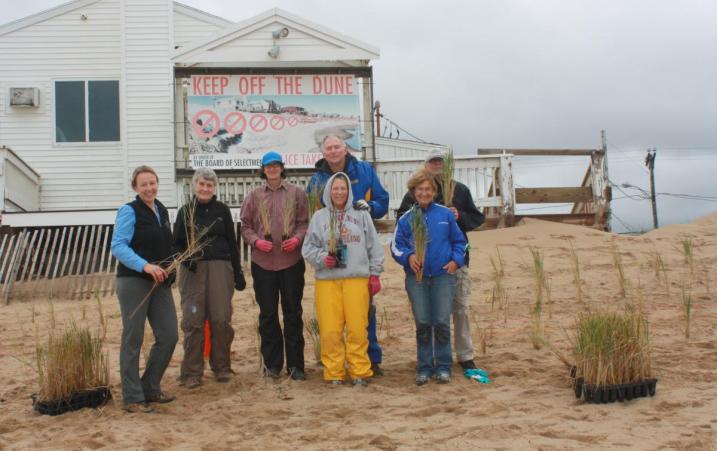Volunteers Plant Beachgrass, Help Restore Dunes on Plum Island
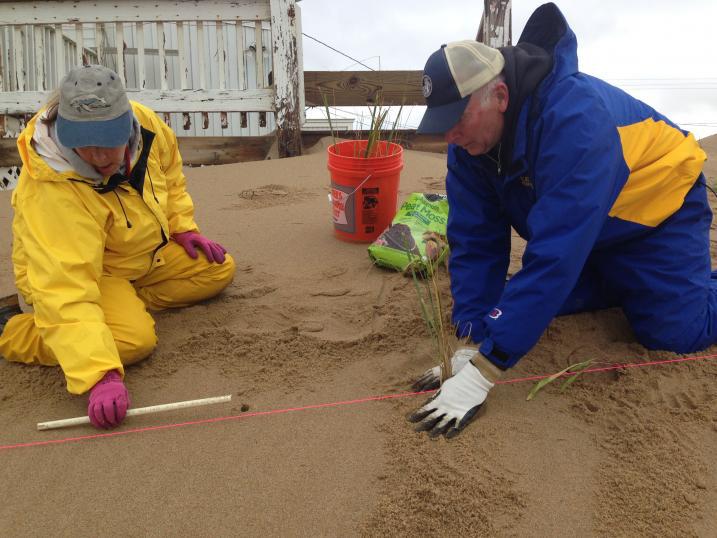
In late October more than 50 volunteers gathered on the Newbury sand dunes on Plum Island to plant beachgrass. For the sponsors--Town of Newbury, MA, UNH Jackson Estuarine Research Laboratory, NH Sea Grant, and UNH Cooperative Extension—this launch of a project, led by UNH scientist Dr. Gregg Moore, to restore and protect critical dune systems was a huge success.
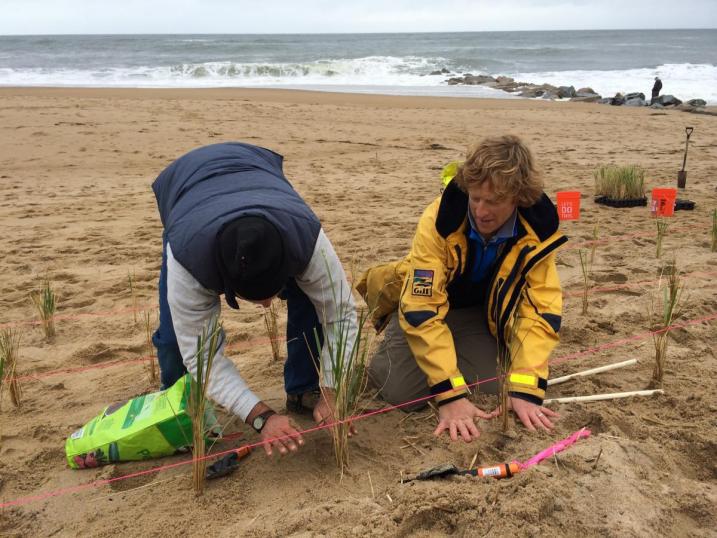
Alyson Eberhardt, coastal specialist with NH Sea Grant and UNH Cooperative Extension, and a key coordinator of the planting and of Coastal Research Volunteers, says, “We were astounded and thrilled that on such short notice we had 53 volunteers over the course of 3 days, attend a community meeting about the project, plant beachgrass, and install sand fencing. What we accomplished certainly exceeded our expectations.”
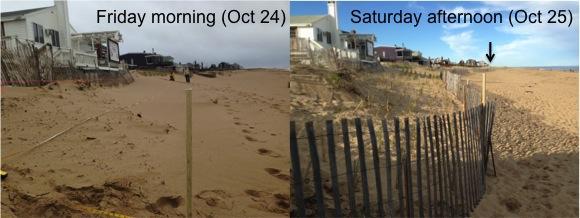
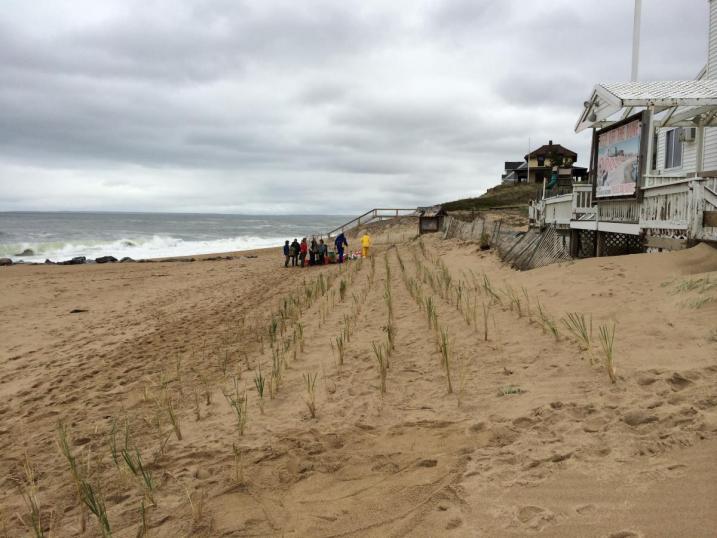
Recent mega-storms, such as Hurricane Sandy, have exacerbated issues of land ownership, beach use, dune ecology, and coastal management. Barrier beaches (“dune systems”) are dynamic, naturally eroding and building through waves, currents, and winds over short and long time frames. Storm surges and seasonal changes in dune structure sometimes results in sand piling up on beachfront properties—burying yards, beach furniture, and walkways. Homeowners attempt to fix the problem by removing the sand, creating paths to the beach across natural vegetation, and sometimes installing rock walls to keep the sand at bay. But this usually weakens and reduces the resilience of the dune system—a system that is needed to protect their homes from future storms and flooding.
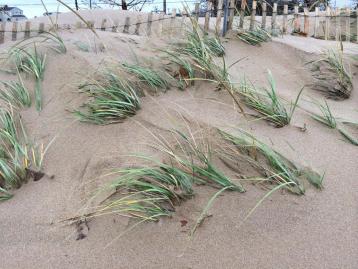
American beachgrass (Ammophila breviligulata) is the primary plant stabilizing the dunes here. In recent years, the Town of Newbury, led by Conservation Commission Chair Doug Packer, has nourished the beach with additions of sand and native plantings. While these efforts were successful, more plantings were needed to enhance and protect this living shoreline. These dynamic dune systems help protect homes during storms, stabilize beaches for recreational enjoyment, and supply habitat for wildlife such as the endangered piping plover.
So, in late October, as huge waves rolled onto shore, volunteers kneeled in the dunes above high tide line and planted beachgrass. Using a trowel, volunteers dug a hole in the soft, but moist sand, added a small handful of fertilizer, placed a plug of beachgrass into the hole then filled the hole with sand. Just like planting onions, except for the sand part. Each planting was spaced 18 inches apart in rows about 2 feet apart. To add diversity, every 10th planting was a seaside goldenrod (Solidago sempervirens). After the planting, volunteers erected fencing, which helps collect and build up the dune and protects the newly planted beachgrass from human disturbance.
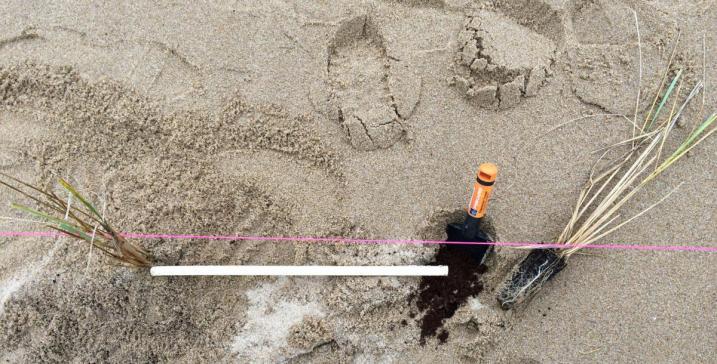
The night before the first volunteer planting, Doug Packer and scientists from the University of New Hampshire (Alyson Eberhardt and Drs. Gregg Moore and Dave Burdick) held a forum in Newbury inviting local residents to learn about the status and function of the Newbury dune system and how to get involved. Interest among the community spilled out from that meeting onto the beach the next day and again on Saturday. Several people from the community joined in to plant beachgrass and others stopped by to thank the volunteers for their help.
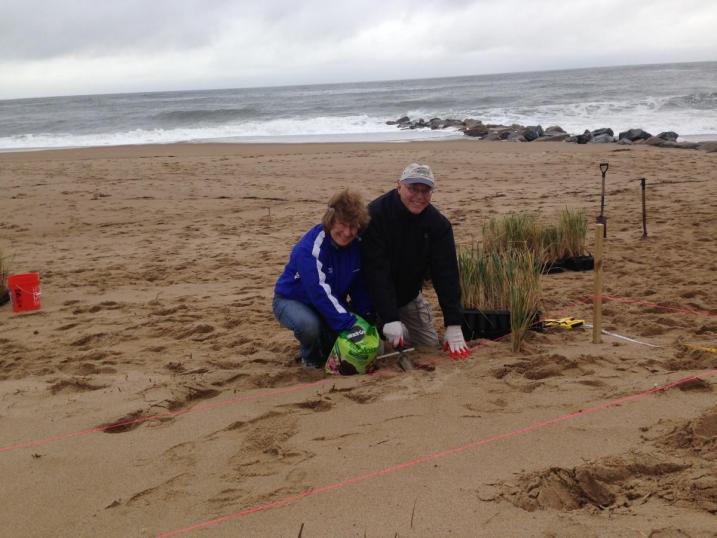
I joined a handful of others to plant beachgrass on the first day. After 3 hours, we were tired but elated with our progress. The coastal setting for this volunteer event was appealing and the work refreshing and satisfying. Looking down the beach we could see where several houses had disappeared during the last hurricane, and where homeowners had deposited huge quantities of boulders (“hard infrastructure”) to protect their homes. Sometimes this doesn’t work, but in this case it may be the only option that saved the houses in an area where the dune system is gone. Farther up the beach, where dunes still exist, we were building a living, hopefully resilient, natural community for people and nature.
